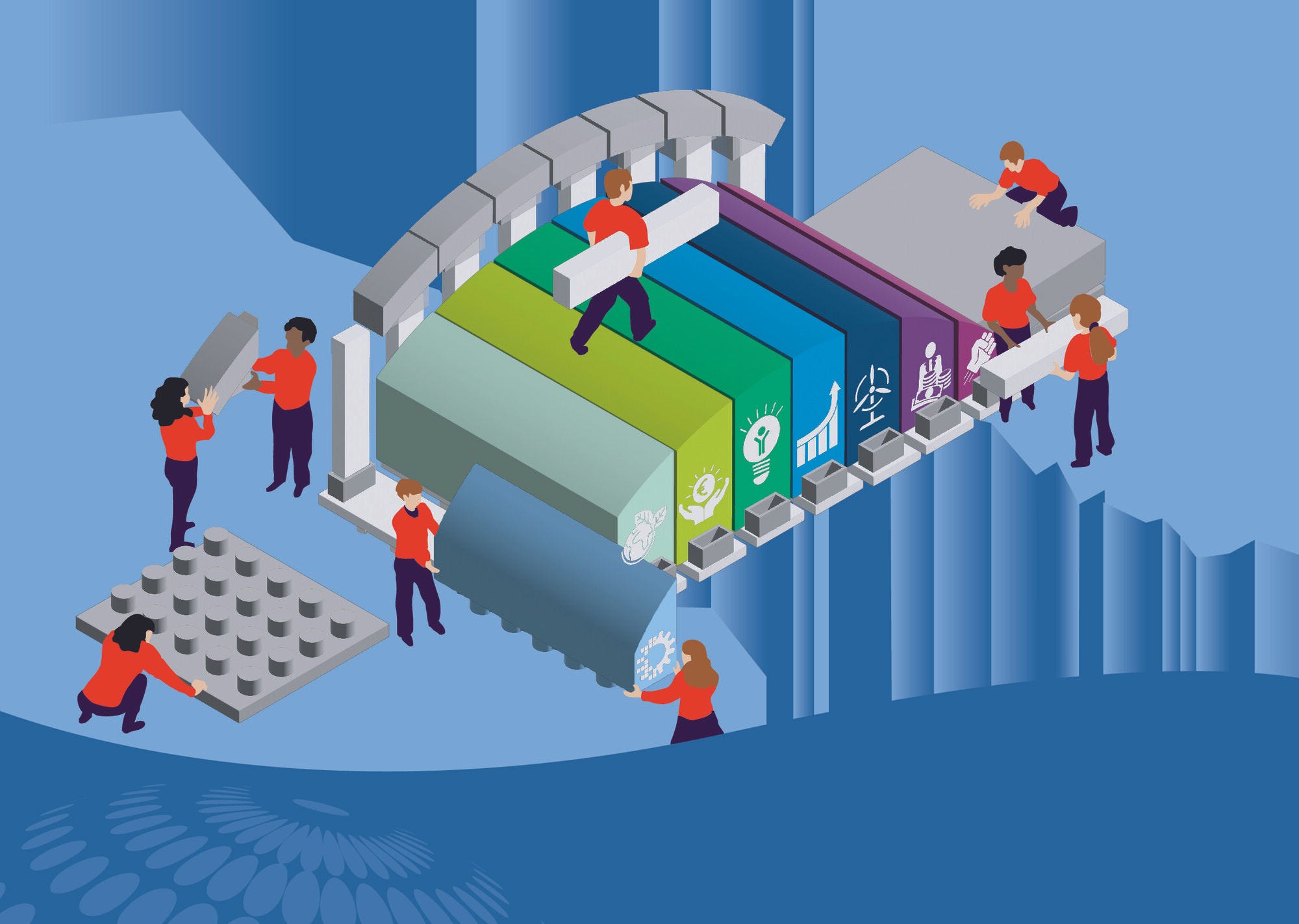Peru’s youth labour market has achieved a number of important outcomes, and currently youth employment rate is higher than both the average of OECD countries and many Latin American countries. The combination of almost two decades of remarkable economic growth and policies targeted at the most vulnerable groups contributed considerably the progress of aggregate employment outcomes.
Notwithstanding these favourable patterns, numerous challenges remain. Low-skilled youth, young women and youth with a disadvantaged background face particularly high risks of being left behind in the labour market. Despite recent improvements, income inequality is high and poverty has risen recently, using the benchmark provided by the national poverty level. A large share of the youth workforce with a lack of right skills and a sizeable informal sector hinder the transition to more productive, better‑paid and better‑quality jobs for Peruvian youth.
At the same time, giving youth opportunities to become well-integrated into the world of work is a very pressing challenge. Today’s high proportion (and number) of youth in the Peruvian working age population is set to decline in the near future. Accordingly, the opportunities to benefit from the growth dividend associated with the demographic bonus will fade away.
Peru requires a comprehensive policy approach to tackle the difficulties that many youth face in fully integrating the world of work. This should include measures to both tackle the economic, regulatory and administrative barriers to their employment in quality formal jobs, and to produce better outcomes for youth by providing them with the right activation and social incentives to seek employment and equipping them with relevant skills. It should also include targeted measures to the most vulnerable youth.
The OECD therefore recommends that policy makers in Peru:
Strengthen social dialogue to improve labour market policies so to contribute to reduce the dualism of the labour market between permanent and temporary contracts, thus encouraging employers to hire young workers. Experience with the Ley Pulpín, the controversial law that in 2015 aimed to reform the youth labour market before being repealed for lack of consensus, highlights the importance of social dialogue in Peru.
Ensure that incentives to the firm sector do not alter economic activity in unintended ways, particularly by exacerbating the effects of strong sized-based thresholds. These thresholds encourage the small and medium sized enterprises to remain small, hindering the expansion of youth employment.
Expand and increase the efficiency of the public employment services (PES) by strengthening recruitment and training programmes for caseworkers. Current administrative barriers that hamper the engagement of the Peruvian business sector in on-the-job training programmes should be removed.
Re-design the unemployment benefit scheme, possibly combining a system of individual saving accounts with a common solidarity fund and including elements that encourage job search.
Improve social assistance programmes, gearing them better to the needs of jobless youth deprived of unemployment benefit, while at the same time making recipiency conditional upon active job search.
Strengthen the role of policy co-ordination to achieve better outcomes through expanding horizontal collaborations among ministries and vertical collaborations across levels of government. This also includes with regard to educational and vocational training policies to raise skills outcomes.
Continue efforts to increase the enrolment and learning performance of students of disadvantaged background. For example, the programme Decidiendo para un futuro mejor (Deciding for a better future), devised by MineduLAB to inform students about the potential returns to education, could be scaled up. One action that could result in a signification reduction of the opportunity cost of sending children to school is the removal of existing barriers of access to conditional cash transfer benefits from the programme Juntos. This would require potentiating Peru’s branchless banking network.
Engage in ambitious policies to tackle the vulnerability of young Peruvian women with a particular emphasis on: (i) Reinforcing the willingness of female adolescents to stay in education, including through efforts to strengthen the conditionality of the programme Juntos; (ii) Organising high-quality school‑based sexual education programmes to combat teenage pregnancy; (iii) Alleviating motherhood penalty in adulthood and facilitating female participation in the formal labour market through improving children access to early childhood education and care.
Combat discrimination against indigenous and Afro-Peruvian youth with a particular emphasis on: (i) Improving the implementation of the Educación Intercultural Bilingüe programme (Intercultural Bilingual Education); (ii) Introducing quotas for Afro-Peruvians in the Beca 18 scholarship programme, as it is already the case for indigenous students from highlands and Amazonian communities; (iii) Setting out targets for indigenous and Afro-Peruvian in the Active Labour Market Programmes offered by the PES; (iv) increasing the share of indigenous and Afro-Peruvian among PES caseworkers.
Boost job opportunities for rural indigenous youth by implementing a nationally co‑ordinated strategy to help rural populations engage in new and more profitable entrepreneurial activities, such as, for example, tourism, fish farming and organic farming.













